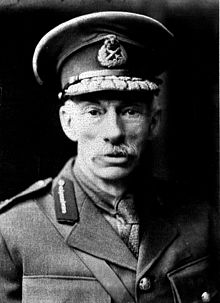
Fort Erie is a town in the Niagara Region of Ontario, Canada. The town is located at the south eastern corner of the region, on the Niagara River, directly across the Canada–United States border from Buffalo, New York, and is the site of Old Fort Erie which played a prominent role in the War of 1812.
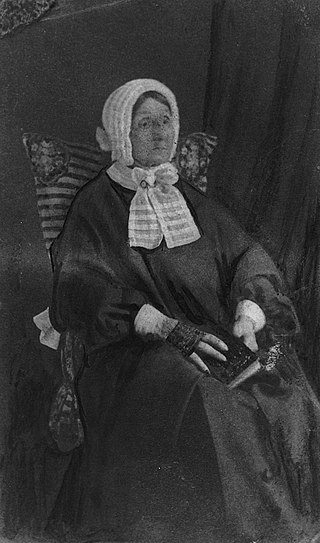
Laura Secord was a Canadian woman involved in the War of 1812. She is known for having walked 20 miles (32 km) out of American-occupied territory in 1813 to warn British forces of an impending American attack. Her contribution to the war was little known during her lifetime, but since her death she has been frequently honoured in Canada. Though Laura Secord had no relation to it, most Canadians associate her with the Laura Secord Chocolates company, named after her on the centennial of her walk.
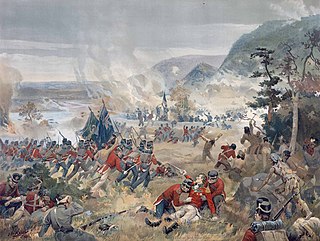
The Battle of Queenston Heights was the first major battle in the War of 1812. Resulting in a British victory, it took place on 13 October 1812 near Queenston, Upper Canada.

The Battle of Lundy's Lane, also known as the Battle of Niagara or contemporarily as the Battle of Bridgewater, was fought on 25 July 1814, during the War of 1812, between an invading American army and a British and Canadian army near present-day Niagara Falls, Ontario. It was one of the bloodiest battles of the war, and one of the deadliest battles fought in Canada, with approximately 1,720 casualties including 258 killed.

National Historic Sites of Canada are places that have been designated by the federal Minister of the Environment on the advice of the Historic Sites and Monuments Board of Canada (HSMBC), as being of national historic significance. Parks Canada, a federal agency, manages the National Historic Sites program. As of November 2023, there were 1,005 National Historic Sites, 171 of which are administered by Parks Canada; the remainder are administered or owned by other levels of government or private entities. The sites are located across all ten provinces and three territories, with two sites located in France.

The Battle of Stoney Creek was a British victory over an American force fought on 6 June 1813, during the War of 1812 near what is now Stoney Creek, Ontario, Canada. British units made a night attack on the American encampment, and due in large part to the capture of the two senior officers of the American force and an overestimation of British strength by the Americans, the outcome of the battle was a total victory for the British, and a turning point in the defence of Upper Canada.

The Battle of Chippawa, also known as the Battle of Chippewa, was a victory for the United States Army in the War of 1812, during its invasion on July 5, 1814, of the British Empire's colony of Upper Canada along the Niagara River. This battle and the subsequent Battle of Lundy's Lane demonstrated that trained American troops could hold their own against British regulars. The battlefield is preserved as a National Historic Site of Canada.
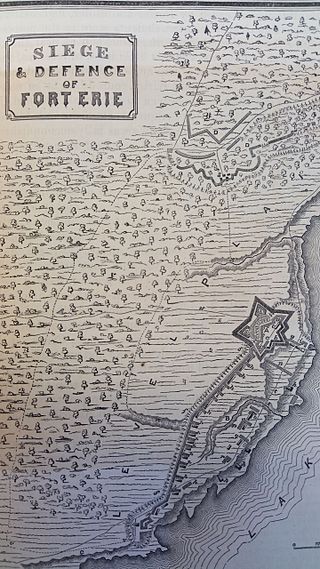
The Capture of Fort Erie by American forces in 1814 was a battle in the War of 1812 between the United Kingdom and the United States. The British garrison was outnumbered but surrendered prematurely, in the view of British commanders.

The Siege of Fort Erie, also known as the Battle of Erie, from 4 August to 21 September 1814, was one of the last engagements of the War of 1812, between British and American forces. It took place during the Niagara campaign, and the Americans successfully defended Fort Erie against a British army. During the siege, the British suffered high casualties in a failed storming attempt; they also suffered casualties from sickness and exposure in their rough encampments. Unaware that the British were about to abandon the siege, the American garrison launched a sortie to destroy the British siege batteries, during which both sides again suffered high losses.

The Battle of Fort George was fought during the War of 1812, in which the Americans defeated a British force and captured Fort George in Upper Canada. The troops of the United States Army and vessels of the United States Navy cooperated in a very successful amphibious assault, although most of the opposing British force escaped encirclement.

The Lincoln and Welland Regiment is a Primary Reserve infantry regiment of the Canadian Army based in St. Catharines, Ontario.

The Capture of Fort Niagara took place 18-19 December 1813 during the War of 1812 between Great Britain and the United States. The American garrison was taken by surprise, and the fort was captured in a night assault by a select force of British regular infantry.
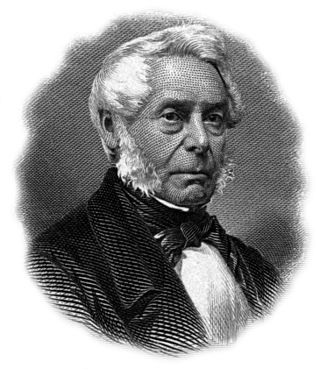
William Hamilton Merritt was a businessman and politician in the Niagara Peninsula of Upper Canada in the early 19th century. Although he was born in the United States, his family was Loyalist and eventually settled in Upper Canada. Merritt fought in the War of 1812, was captured by the invading American forces, and held as a prisoner of war. After the war, he returned to the Niagara region and began a career in business. He was one of the founders of the Welland Canal. He was a supporter of the Abolitionist cause to end slavery in the U.S., and of the settlement of escaped slaves in St. Catharines.
The Raid on Port Dover was an episode during the War of 1812. American troops crossed Lake Erie to capture or destroy stocks of grain and destroy mills at Port Dover, Ontario, which were used to provide flour for British troops stationed on the Niagara Peninsula. At the instigation of Lieutenant Colonel John B. Campbell and without sanction from his superiors or the government of the United States, the Americans also destroyed private houses and other property, prompting British commanders to demand reprisals in other theatres of the war. To some degree, the burning of Washington by the British later in the year was influenced by the American actions at Port Dover.

The Battle of Buffalo took place during the War of 1812 on December 30, 1813, in the State of New York, near the Niagara River. The British forces drove off the American defenders and destroyed many buildings and ships. The operation was retaliation for American troops burning the Canadian village of Newark.
The Canadian Volunteers was a unit composed of pro-United States citizens or inhabitants of Upper Canada which fought for the United States of America during the Anglo-American War of 1812.
The Battle of Lewiston saw Major General Phineas Riall lead a combined British and Native force against the American town of Lewiston. They defeated the Americans in the area and then looted and burnt the town.
On July 5, 1813, 34 Canadian militia and 7 British regulars from the 49th Regiment of Foot crossed the Niagara River and raided Fort Schlosser. They took the American garrison of 11 by surprise and captured them along with all the arms and stores.
On January 8, 1814 a contingent of 70 Americans led by General John Swift attacked a group of British soldiers gathering wood a half-mile from Fort Niagara.
During the War of 1812, on October 11, 1813, an American expeditionary force entered the Missisquoi Bay of Lake Champlain in Quebec, Canada, intent on raiding the area. Their goal was to stop smuggling goods across the border. They succeeded in defeating a contingent of Canadian militia and raid the town of Philipsburg, Quebec.
